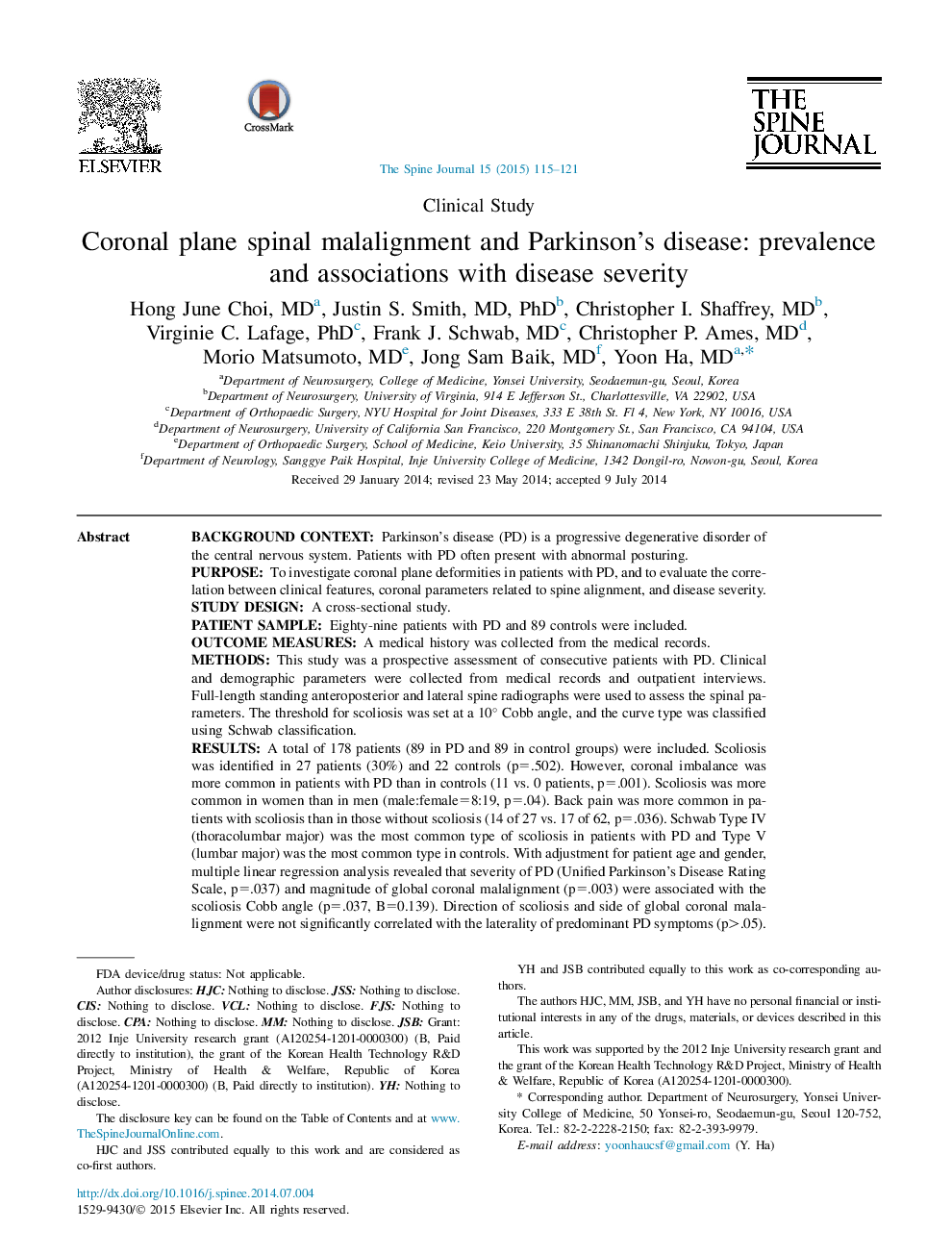| Article ID | Journal | Published Year | Pages | File Type |
|---|---|---|---|---|
| 4096508 | The Spine Journal | 2015 | 7 Pages |
Background contextParkinson's disease (PD) is a progressive degenerative disorder of the central nervous system. Patients with PD often present with abnormal posturing.PurposeTo investigate coronal plane deformities in patients with PD, and to evaluate the correlation between clinical features, coronal parameters related to spine alignment, and disease severity.Study designA cross-sectional study.Patient sampleEighty-nine patients with PD and 89 controls were included.Outcome measuresA medical history was collected from the medical records.MethodsThis study was a prospective assessment of consecutive patients with PD. Clinical and demographic parameters were collected from medical records and outpatient interviews. Full-length standing anteroposterior and lateral spine radiographs were used to assess the spinal parameters. The threshold for scoliosis was set at a 10° Cobb angle, and the curve type was classified using Schwab classification.ResultsA total of 178 patients (89 in PD and 89 in control groups) were included. Scoliosis was identified in 27 patients (30%) and 22 controls (p=.502). However, coronal imbalance was more common in patients with PD than in controls (11 vs. 0 patients, p=.001). Scoliosis was more common in women than in men (male:female=8:19, p=.04). Back pain was more common in patients with scoliosis than in those without scoliosis (14 of 27 vs. 17 of 62, p=.036). Schwab Type IV (thoracolumbar major) was the most common type of scoliosis in patients with PD and Type V (lumbar major) was the most common type in controls. With adjustment for patient age and gender, multiple linear regression analysis revealed that severity of PD (Unified Parkinson's Disease Rating Scale, p=.037) and magnitude of global coronal malalignment (p=.003) were associated with the scoliosis Cobb angle (p=.037, B=0.139). Direction of scoliosis and side of global coronal malalignment were not significantly correlated with the laterality of predominant PD symptoms (p>.05).ConclusionsGlobal coronal malalignment is more prevalent in patients with PD than in controls. Greater severity of PD was significantly associated with greater magnitude of scoliosis Cobb angle, even after adjusting for the effects of patient age and gender. However, direction of scoliosis and side of global coronal malalignment were not significantly associated with the dominant laterality of PD symptoms.
